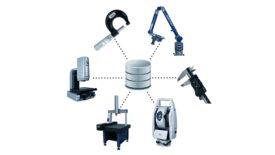Medical
Medical
Integration of digital twin technology in medical device manufacturing provides the potential to improve device performance, optimize production processes and reduce quality defects.
Read More
Software
Seven Ways that AI Will Make Calibration Faster and More Efficient
When data is in an easily readable digital format, users can harness the power of AI to further improve their calibration processes.
October 7, 2024
Medical
Medical Devices: Breaking into an Industry
I have worked in regulatory and quality teams for surgical eye implants, virtual reality based devices and wearables for remote patient monitoring, along with providing thought leadership on artificial intelligence regulation.
October 5, 2024
Quality 101
Maximizing Medical Device Quality: A Guide to Implementing Operational Excellence
By establishing precise parameters for success from the outset and implementing proven strategies, manufacturers can proactively mitigate risks, streamline operations, and foster a culture of excellence.
July 16, 2024
Vision & Sensors | Machine Vision 101
Revolutionizing Quality Control: How AI Vision Is Setting New Industry Standards
The future of quality inspection is bright, with AI vision leading the charge toward more automated, reliable, and efficient processes.
June 4, 2024
Test & Inspection
Just a Twist: Not Too Much, Not Too Little Turns Out Right
Here are a handful of example quality control processes that focus on the measurement of torque, with emphasis on sectors where testing is highly regulated, FDA 21CFR Part 11 being a prime consideration.
May 27, 2024
Column | John Vandenbemden
The Standard Explained: What is ISO 17025: 2017?
March 11, 2024
Edge Learning
How Harnessing Edge Learning AI Technology Simplifies Manufacturing Processes
The combination of machine vision and edge learning is a powerful tool that can aid the manufacturing process in numerous ways.
March 11, 2024
Software & Analysis
How modern software can transform the supply chain with manufacturing quality at the center
Enable a manufacturing quality-driven collaboration between suppliers and buyers to eliminate interpretation, reduce costs, risks, and expedited delivery time.
February 16, 2024
Stay in the know with Quality’s comprehensive coverage of
the manufacturing and metrology industries.
eNewsletter | Website | eMagazine
JOIN TODAY!Copyright ©2024. All Rights Reserved BNP Media.
Design, CMS, Hosting & Web Development :: ePublishing





.jpg?height=168&t=1720482044&width=275)





